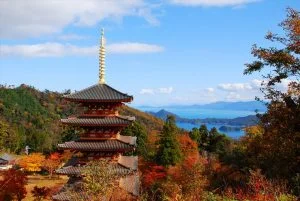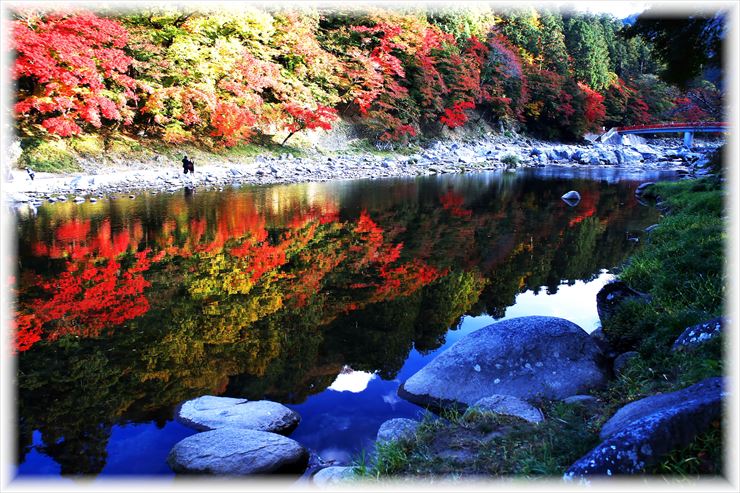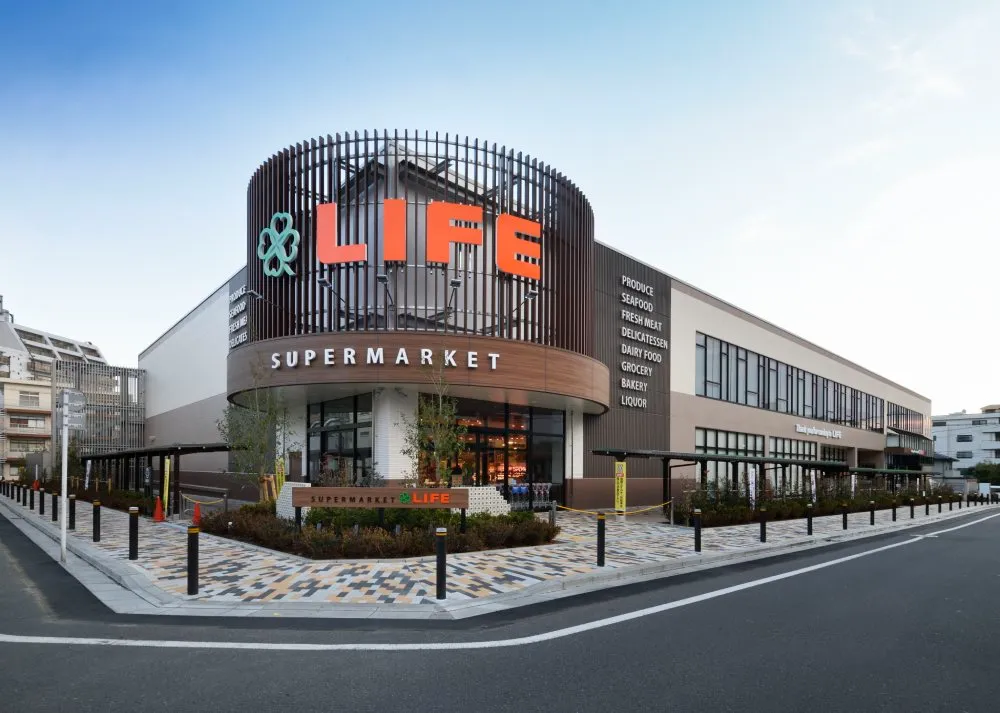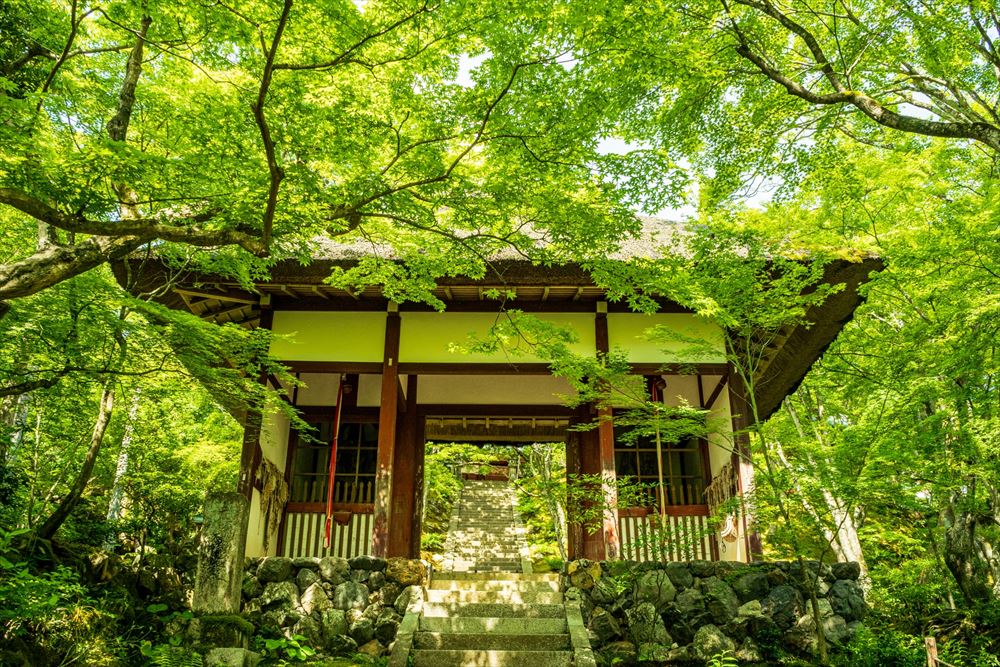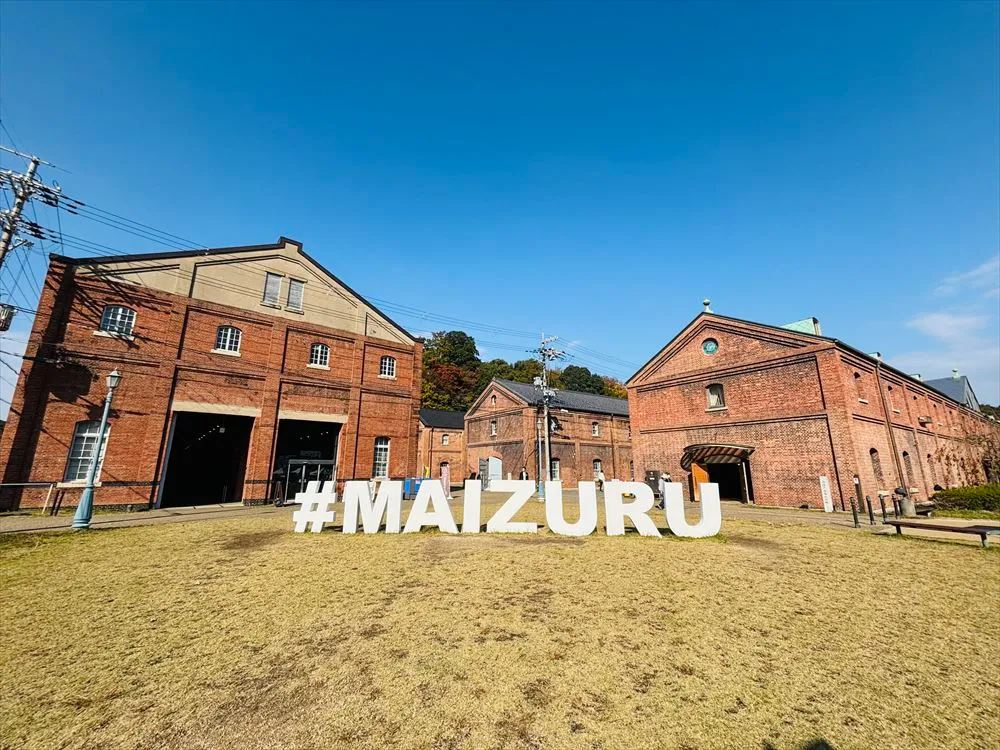
Kyoto in Autumn, Autumn Leaves
Kyoto in autumn
The peak of autumn foliage in Kyoto is usually from early November to early December, but varies depending on the climate and other conditions of the year. Because of the higher elevation, leaves turn red and yellow earlier in the northern and western areas of Kyoto than in the center of the city.

Keihoku Area (north west area), Autumn along Shuzan-kaido Road
Shuzan-kaido is a road winding in mountains, connecting Ukyo-ku in Kyoto City (Kyoto Pref.) and Obama City (Fukui Pref.). Since ancient times, this route was a main artery of distribution, including seafood, especially mackerel (saba) from the Sea of Japan. It is also known as one of the “Saba-kaido,” mountainous roads connecting Fukui and Kyoto along which people carried seafood.
In the era before railways and automobiles became common, peddlers carried their wares on foot and conveyed mackerel caught in Wakasa Bay to the center of Kyoto. In those days, without refrigeration technology, people salted fresh mackerel and carried it on the land. Taking a whole day getting to central Kyoto, the degree of saltiness of the fish was just right when it reached the city, and it is said that the mackerel delighted the townspeople of Kyoto. Now, still being a main route from Kyoto to the Sea of Japan, Shuzan-kaido is a popular, picturesque road with fine scenery nestled in mountains, forests, and villages. Have a relaxed trip with beautiful nature and autumn foliage along Shuzan-kaido.
Hiking from Kiyotaki to Sanbi Takao

There is a hiking trail from Kiyotaki to upstream Takao (Jingo-ji Temple), Makinoo (Saimyo-ji Temple), and Toganoo (Kozan-ji Temple) along the Kiyotaki-gawa River. The area is popular for fireflies and dining on a balcony over the river in summer, and colored leaves in autumn. Kin-unkei Valley is highly recommended for autumn leaves. Kozan-ji Temple is a world heritage site. The trail has fewer tourists than the heart of the city, so it is a kind of hidden spot to see fine autumn leaves.
Hiking from Kiyotaki to Sanbi Jingo-ji Temple

A village at the foot of Mount Atago is Kiyotaki. Get off at the Kiyotaki bus stop (Kyoto Bus), pass Toen-kyo Bridge, and you can see a 4-km hiking trail to Takao. It takes about 90 minutes to walk to Takao in a leisurely manner while seeing a fine valley view of the Kiyotaki River. The river is lined with traditional hotels and restaurants, so having lunch is also fun. Why not enjoy edible wild plants in spring, ayu (sweetfish) in summer, matsutake mushrooms or yudofu (boiled tofu dish) in autumn, leisurely savoring Kyoto cuisine on a balcony over the river? Stone steps lead to Jingo-ji Temple.
Hiking from Kiyotaki to Sanbi Kozan-ji Temple

It is about 5.5 km from start point Kiyotaki stop (Kyoto Bus) to Kozan-ji Temple, taking about 2.5 hours. It is best to confirm the bus schedule beforehand since there are few buses from the Tochinoo bus stop for return. The peak season of autumn foliage is usually mid-November to early December.
Shuzan Castle Ruins
Shuzan-jo Castle was built by warlord Akechi Mitsuhide in 1579 for attacking the northwest Tanba region. Fifteen remains including stone walls of the Hon-maru castle keep remain. It is a mountain castle that even novices can climb to, like hiking. With the remains worth seeing, such as the stone walls, it is also recommended for castle buffs.

Miyama’s Thatched Village (Kayabuki no Sato)
Shuzan-kaido’s highlight is around Tanba Heights with its picturesque country scenery of autumn leaves. Cherry blossoms in spring and fresh greenery in early summer are also worth a visit. Kayabuki no Sato, home to old thatched houses that were built about 200 years ago, is designated a National Preservation District for Groups of Historic Buildings.

